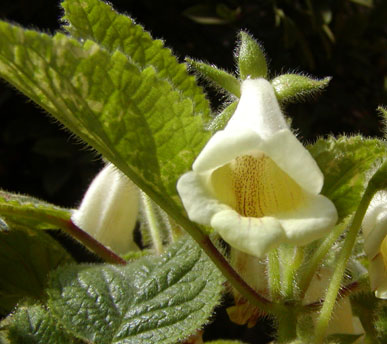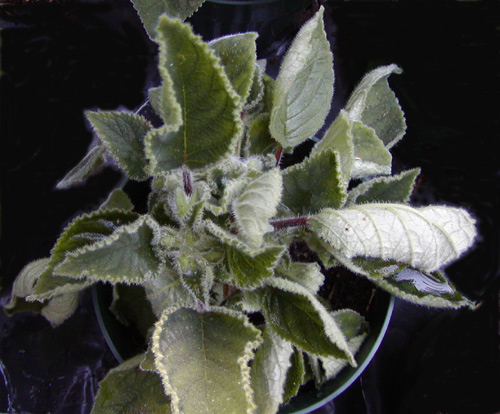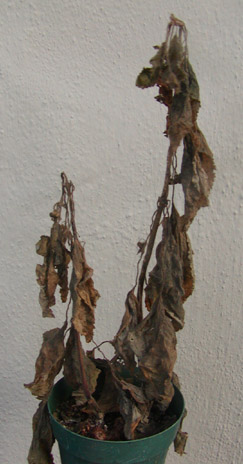Hybridization
I have crossed this species with
S. 'Peninsula Belle',
and the resulting hybrid plants usually have flowers with a detectable but
diminished conspicua aroma.
The flower color (lavender with lavender streaks in a yellow throat)
I find unappealing, but others have been less negative about it.
One very positive trait that S. conspicua
gave to its progeny in this cross is speed to bloom.
S. 'Peninsula Belle' x conspicua plants bloomed much
faster from seed than did S. 'Peninsula Belle' x self
(the slowness of the latter apparently being a legacy of
S. lineata).
This trait, which it shares with its close relative
Sinningia eumorpha,
makes this species
a very useful starting point for a hybridization project.
There is a side view of one of the conspicua hybrid flowers on the
Peninsula Belle flower comparison page.
Others, including Ruth Coulson, Jon Lindstrom, Peter Shalit, Jim Steuerlein,
and Dan Tomso, have used this species for hybridizing.
It bequeaths to its offspring many of the same good qualities that
Sinningia eumorpha imparts,
with the additional possibility of fragrance.
See the Dircaea-clade crossing table for more references.
Jim Steuerlein crossed
this species with S. polyantha.
|


